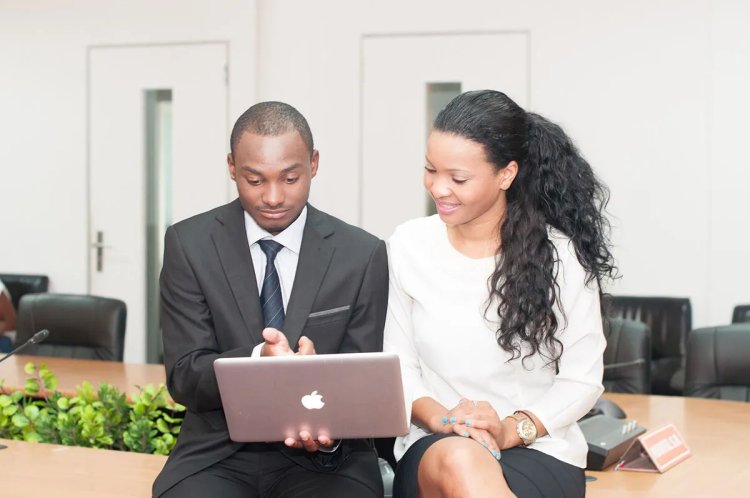3 Steps To Creating Harmony In The Office
As everyone starts trickling into the office, it can be difficult to switch back to the pre-pandemic harmony that may have existed in one’s place of work.

Many companies have asked for employees to return to work, whether it be full-time, flexi-time or on a hybrid work model.
As everyone starts trickling into the office, it can be difficult to switch back to the pre-pandemic harmony that may have existed in one’s place of work.
For the most part, we’ve grown used to working in our own space, on our own. To now suddenly have to share space with people who are not in our bubble, can be daunting for many. While it is known to breed germs, it could also breed hostility.

So, just how can employees create a harmonious workplace? How can business managers and bosses ensure that there aren’t any dishwasher wars taking place between colleagues?
Viral Tea spoke to a few business leaders for tips and advice on creating a calm and clean workplace for all.
Get extra help where needed
Everybody has become fanatical about cleanliness – and rightfully so. As employees start heading back to work again, it’s probably just a matter of time before a dirty cup is left in the sink or someone doesn’t clean up after making themselves a snack.
While it may be a minor irritation at first, it could flare up into something bigger and before you know it, people are fighting over who didn’t wash their dishes and who left their half-eaten lunch in the fridge to become an ecosystem all of its own.
Aisha Pandor, CEO of SweepSouth, Africa’s leading on-demand home and office services, suggests that businesses hire someone to come in on a regular basis in order to clean the space.
She adds that this takes the burden off of the team to always be on top of things in addition to their daily work, and it ensures that surfaces and areas are properly cleaned.
A study done by microbiologist Dr Charles Gerba of the University of Arizona to measure bacterial levels in offices shows that personal work areas contain alarmingly high levels of bacteria. Desks, in particular, are teeming with germs.
“In fact, the average desk harbours 100 times more bacteria than a kitchen table! A desk can support 10 million bacteria, and without proper cleaning, even a small area may contain bacteria that can make you ill. Work surfaces need to be kept hygienic by regularly cleaning them with an antibacterial product,” she says.
Phones and keyboards also need to be wiped down weekly to stop them from becoming bacterial battlegrounds. According to British microbiologist Professor Sally Bloomfield, our hands and the surfaces we touch are the superhighways for bacteria.
Because we touch our phones and keyboards so often, they top the list of the dirtiest items on our desks.
“In these times, you want to ensure that your office is not only be cleaned on the surface level. You need to see to it that it’s being cleaned properly and thoroughly so that your team is working in the best conditions possible,” Pandor notes.
Make it equal
Equality and inclusion in the team environment are also necessary to make a hybrid workplace model successful.
“One reason the hybrid model is well-received among employees is that it gives them the option to choose and decide. If the hybrid work policy allows for two days of office and three days of remote work, organisations can consider letting the employees decide each week’s schedule individually or among their own teams,” says Andrew Bourne, Regional Manager of Zoho Africa.

In order to make the process bias-free, it is better to establish guidelines for both in-office and remote work, and let employees make the final decision. Organisations should treat all employees equally no matter where they work.
Physical environments that support wellness
The impact the physical work environment has on our wellbeing is increasingly well understood. In the world of hybrid work, the workplace needs to be more than a functional place in which work is done, but rather be an inviting space that promotes creativity and collaboration, or “less office cubicle and more cafe lounge”, as the Harvard Business Review puts it.
Consider office design that is inviting – spaces that incorporate greenery, natural light, art and design, all of which contribute to making the space a pleasant one to be in.
Office workers returning to corporate spaces will have spent the past two years surrounded by their houseplants and taking afternoon walks, so will undoubtedly have a heightened desire to avoid spending hours in workspaces with poor ventilation and no natural light, or spaces that have dust or contaminants in the air.
Workspaces that feel more eco-friendly definitely have a positive impact on workers’ wellbeing and productivity, and will definitely go a long way towards creating a peaceful work environment.
Green spaces promote an open and calm feel, which, in an office context, could result in team members interacting more harmoniously and collaboratively – a big plus in the coming year as businesses rally to rebuild post the pandemic.






